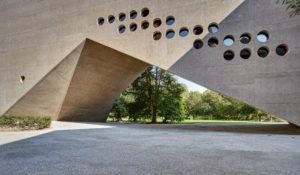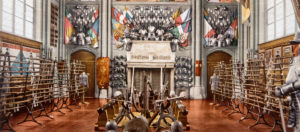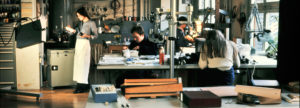
A behind-the-scenes look at the National Museum circa 1973
To celebrate the 75th anniversary of its inauguration, in 1973 the National Museum compiled a photo gallery documenting the diversity of the tasks performed in its workshops, offices, studios and collections. Today these images conserve an exciting insight into the Museum’s activities and into another time.
Since the National Museum opened in 1898 it is not only the number of visitors that has steadily grown but also the number of its employees. In the early years the Director was backed only by two scientific experts and a number of volunteer workers. By 1973 the Museum’s headcount had expanded to include 14 scientific experts and a total of 81 technicians, office staff and hand-workers, along with 60 temporary employees, engaged in an extremely wide variety of fields. The conservators (today’s curators) in charge of their respective departments (e.g. ceramics, weapons and textiles) were responsible for the artefacts. They developed their collections, bought new items, arranged the presentations and generally provided specialist information. They were actively assisted in this task by the restorers, who were likewise assigned to specific fields to ensure competent conservation and restoration, working in specially fitted out shops. They were also generally responsible for the handling of artefacts. The hand-workers included carpenters, locksmiths, saddlers and decorators, who designed the exhibition architecture and the Museum’s furnishings. The photo studio documented the artefacts and the library provided relevant literature, while the service staff kept the Museum clean and tidy. In addition, of course, were the numerous offices for clerical work, with no computers yet but featuring ashtrays, plants and sometimes even a battle axe or oil painting as a wall decoration.
Here, for once, the aesthetics of the square colour photographs do not capture the exhibition artefacts, decors and vernissages otherwise visible outside. Instead they portray the National Museum’s office employees, bringing their day-to-day work, normally hidden behind the scenes, into the foreground.
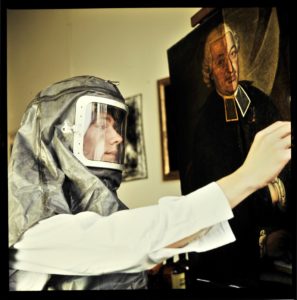
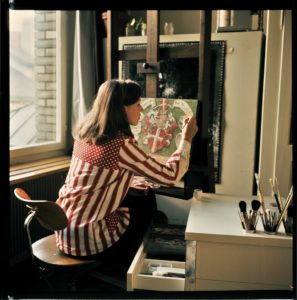
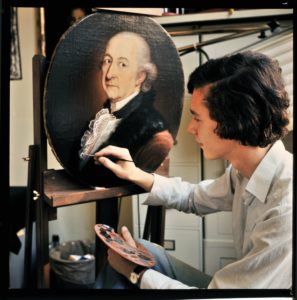
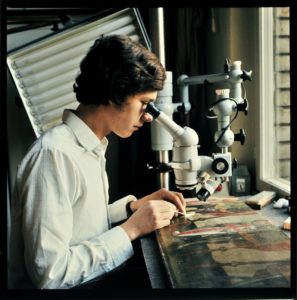
Shop for conserving and restoring paintings
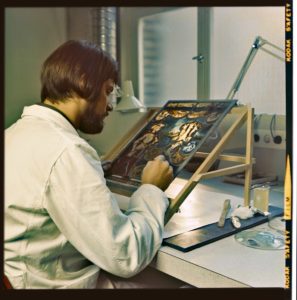
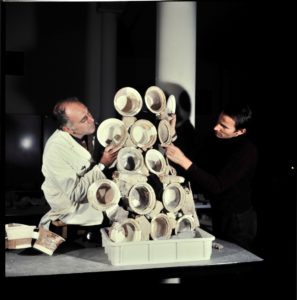
Workers restoring a stained-glass painting and building a medieval cockle stove
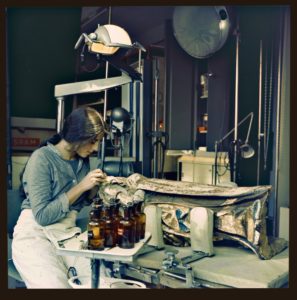
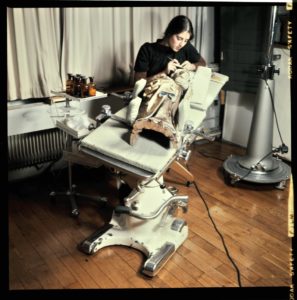
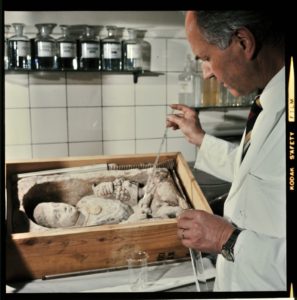
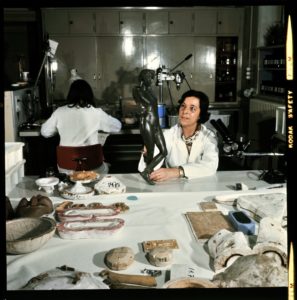
Shop for conserving and restoring sculptures
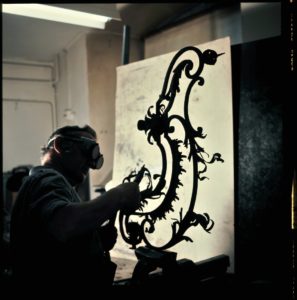
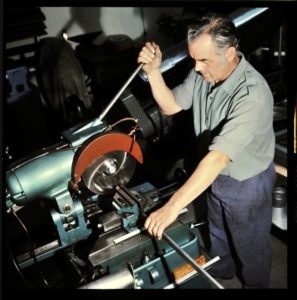
Smithy

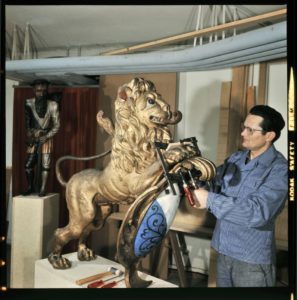
Carpenter’s shop
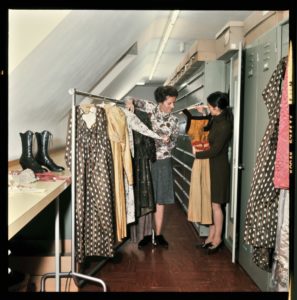
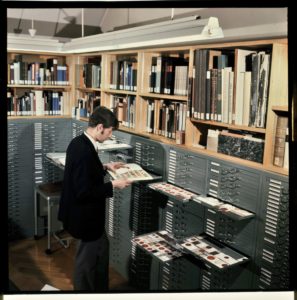
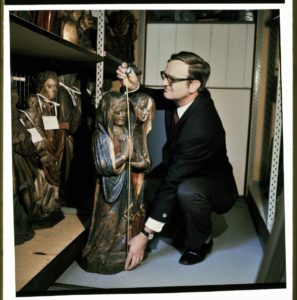

Collections and reserves
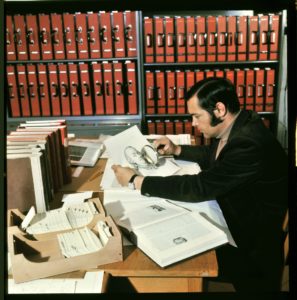
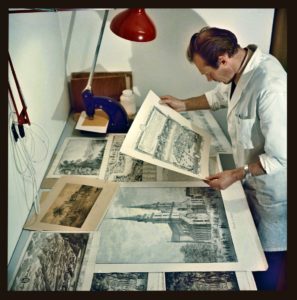
Graphic collection and paper restoration shop
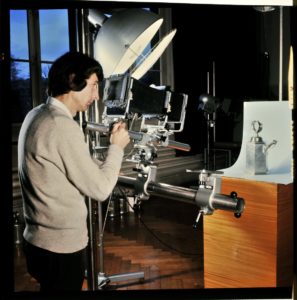
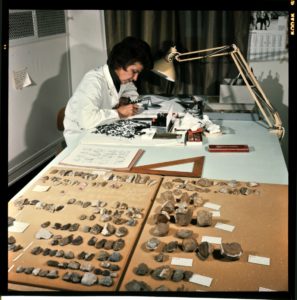
Photographs and drawings of artefacts
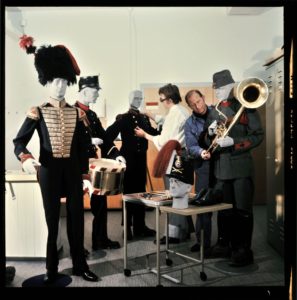
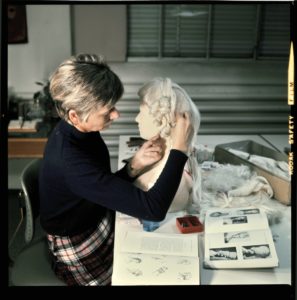
Preparing a textiles presentation
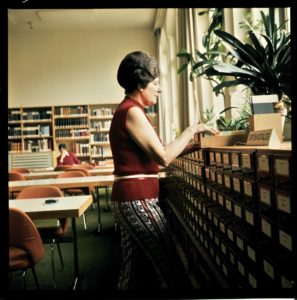
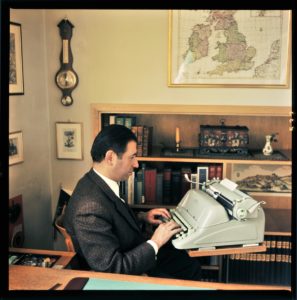
Doing research in the library and writing correspondence in the photo archive
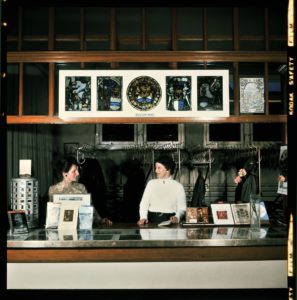

Reception desk and service staff
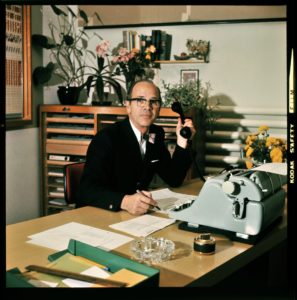


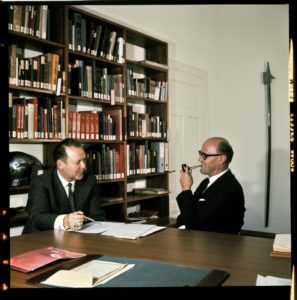
Offices for the Museum’s administration
The National Museum celebrates its 120th birthday
The Swiss National Museum in Zurich was inaugurated on 25 June 1898. To mark this anniversary, we propose a week-long look back at episodes in the institution’s 120-year history.
Monday:
Opening parade
The three-day opening festivities culminated on the afternoon of 25 June 1898 with a lavish celebration parade through downtown Zurich.
Tuesday:
Tour of the Museum
On a tour of the recently opened National Museum around 1900, visitors were mainly impressed with the spectacularly fitted-out exhibition halls.
Wednesday:
Postcards
As a Zurich landmark the National Museum was a greatly appreciated opportunity to write postcards, which were sent by the millions.
Thursday:
Behind the scenes
A look inside the museum’s offices, workshops and collections in the 1970s.
Friday:
Expansion
An enlargement was already planned when the National Museum was opened in 1898. Only 118 years later was the project fulfilled.

